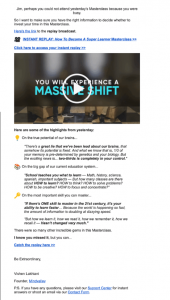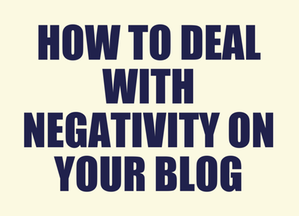Adapt your cold email strategy to the latest spam policy updates. Ensure your emails resonate with prospects and drive meaningful results.
Since February, Google and Yahoo’s new spam policy updates have shaken things up for businesses using cold email outreach. The aim is to make inboxes safer and less cluttered.
For companies in the gray area, the time to adjust is now. With stricter rules, the stakes are undeniably high — the risk of company-wide email blocks looms large.
Rather than see this as a setback, our agency views it as a call to action — a chance to hone our cold emails for precision and compliance.
Concerned that these rules will kill your cold emails and your outbound teams might go crazy? There’s no need for alarm. So what are the requirements and how should you adapt and avoid harsh penalties? Let’s explore.
Here’s what you need to know
The updates primarily impact those blasting out a large volume of emails, including newsletters, particularly over 5,000 emails a day to Gmail addresses. The key requirements include:
- Email authentication. Without DNS settings your emails will never reach your prospects’ inboxes. Authenticating emails through DNS settings is a must to prevent phishing and impersonation.
- Simplified unsubscription. Gone are the days of complex opt-outs. Now, it should be hassle-free, with a one-click solution. Important: Include an easily spotted unsubscribe link right in the email body and ensure you process the recipients’ unsubscription requests within two days.
- Desired delivery. With a tight threshold of 0.3%, even one spam mark in 300 emails can raise flags. Verdict? Lower volumes = safer results. Play smart by diversifying the volume across different SDRs’ mailboxes and domains.
So, how do you handle these killer demands?
The old “shotgun” approach to cold emailing won’t work anymore. Precision and relevance in your emails are now vital. I’ll share actionable and proven strategies to navigate these rules effectively, ensuring your outreach remains powerful.
Start from the ‘backend’
Let’s talk basics: Good prospecting begins with your domain’s health. It’s like your digital ID. Authenticate your domain with these three records — SPF, DKIM and DMARC — to ensure security against impersonators and maintain email integrity:
- SPF (Sender Policy Framework) is your first line of defense against impersonators. It allows only approved IP addresses to send emails from your domain, keeping spoofers at bay. Setting it up involves adding a DNS TXT record with all authorized IPs. Aim for precision to avoid exceeding the 255-character limit and minimize DNS lookups.
- DKIM (Domain Keys Identified Mail) works alongside SPF, ensuring your emails’ integrity hasn’t been tampered with. It uses digital signatures confirmed by two DNS records — a public key and a selector, which points to the right key for verifying your messages.
- DMARC (Domain-based Message Authentication, Reporting and Conformance) is where SPF and DKIM join forces. It tells receiving servers what to do if an email doesn’t pass the SPF or DKIM checks, like quarantining or outright rejecting it. A DNS TXT record specifies these actions, fortifying your email security. Once DMARC is functioning properly, the final step is to adjust your policy and make sure that the DMARC record policy rejects 100% of messages sent from your organization.
- BIMI (Brand Indicators for Message Identification) is a relatively new way of verifying your brand which helps boost trust in your emails. While DMARC authenticates email senders, BIMI adds a visual dimension — typically a brand logo — to further enhance sender verification.
Prioritize your email list hygiene
A few dozen bounces from non-existent contacts can kill your domain reputation. Roll up your sleeves to manually refresh your lists, eliminating outdated contacts. Sure, automated checks might seem like the easy route, but they just don’t cut it in terms of reliability. At my agency, we prefer a hands-on method to keep our database spot-on.
Purchasing lead lists was a common pitfall I noticed among businesses, often leading to disappointing results. That’s why we started to shift gears manually towards creating custom lists that delivered 10:1 ROI to our clients.
Polish your copy to comply with Gmail’s RETVec AI spam filter
Gmail’s RETVec algorithm hunts spam by detecting hidden tricks and deceptive content with advanced precision.
It’s a wake-up call for senders everywhere: Details are now make-or-break. Each misplaced character, typo or non-Latin character in English emails could be your downfall.
You might wonder, will it be harder now to reach recipients’ inboxes? The answer is both yes and no. Enhanced deliverability, better sender reputation and stronger customer engagement are on the table for those who will adapt.
We apply the Forderly spam word checker to pinpoint and rectify spam triggers in real time. Embedded directly in your template editor, this tool promptly flags risky words, proposing smarter alternatives and keeping your emails clean and compliant.
Quality over quantity: Granular prospecting is half the battle
Imagine sending a proposal about a tech HR platform to a CEO — it’s a clear mismatch since CEOs are primarily focused on revenue and ROI. Instead, crafting messages that resonate with what your prospects genuinely need is where success lies.
So what’s the key takeaway here? Intent data.
The companies that dig into their ICPs and harness intent data see their outbound efforts pay off twofold. Deep intent data can boost conversion rates from 6% to 10%, per Gartner. We’ve been riding this wave for the past five years and believe me, it’s a strategy we’re doubling down on.
Therefore, focus on deep intent signals. Consider prospects honed in on your pricing page, those warm contacts interacting with your marketing materials and social media, or companies whose outdated technology screams for the ROI your solution provides.
Let me share a vivid example of how it works. We had a client in the solar panel sector targeting a highly specific market. Traditional methods weren’t effective. We initially thought building owners were our target, but no. Soon, we realized real estate brokers were our gateway — they were more interested in energy savings, which indicated strong buying intent.
To tailor our outreach, we used Google Earth to assess rooftops, calculating the average monthly electricity bill. This precision allowed us to reach out effectively to those prospects who would benefit the most from our client’s solutions.
That’s how we turned cold outreach into warm handshakes.
Hyper-personalization = hyper conversion rates
This means going beyond the template. Conduct granular research into your prospects’ specifics — knowing their industry, titles and pain points. Instead of a one-size-fits-all message, inject details and data-driven insights that speak directly to their unique context and preferences.
Let’s imagine you’re targeting a prospect with your renewable energy product. The best way is to reach out to property developers, who were recently obliged almost everywhere to include renewable energy sources in buildings. Here are my recommendations:
- Start by pinpointing the exact addresses of their projects for your email templates: “I saw your building at {{Address}} after visiting {{Client_1}} the other day — it’s big enough to make a difference in your property value.”
- The aim of renewable energy firms is twofold: eco-friendly production and financial gains. Emphasize that energy-efficient buildings not only benefit the planet but also the wallet: “After installing solar panels on your roof, you can cut your electricity bill by at least half and save at least $ 10,000 annually. Every year, your profit will be higher and the value of your building greater.”
- Property developers are people of numbers. Fill your message with impactful stats and proven outcomes: “We’ve helped local property owners and managers like {{Client_1}}, {{Client_2}}, {{Client_3}} and {{Client_4}} cut their electricity bill by 70%, with 50% cost coverage by the US government.”
Tip: Even though your heart is in sustainability, what really seals the deal is showcasing the financial benefits.
- Promptly suggesting a face-to-face meeting can make all the difference. Picture the classic American business setting — decisions are made in person. Offer a visit to their construction location to showcase the real-life benefits of your solutions: “What do you say to a quick meet-up while I’m in the city? We could even take a tour of your construction site to see the potential impact firsthand. If schedules are tight, a coffee or a virtual chat works too.”
Tip: Mention how sustainable solutions attract a new generation of eco-aware and financially conscious buyers or renters.
2024 cold email strategy: Key takeaways from our wins
- Secure your email domain by attaching an SSL/TLS certificate to it.
- Gradually warm up new email sending domains to bulk numbers.
- Ensure that only opted-in contacts receive emails and avoid outreach to unengaged contacts.
- Stop emailing users who haven’t engaged with your messages for over 12 months.
- Re-engage with old leads every six months, ensuring their contact info is updated.
- Send cold emails only to business accounts using the same ESP.
- Reach out to two to four prospects per company, avoiding more than three individuals within the same domain at the same time.
The post Navigating new spam policies: A guide to effective cold email outreach appeared first on MarTech.
MarTech(9)
Report Post





